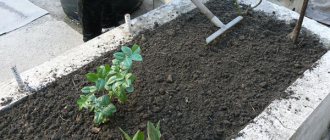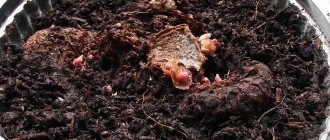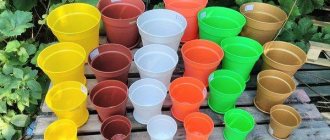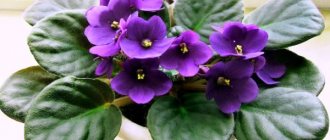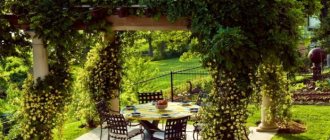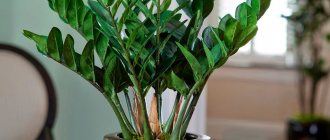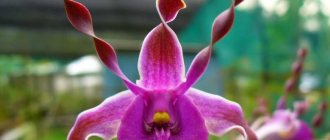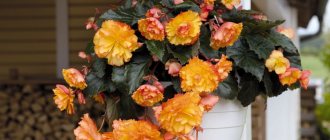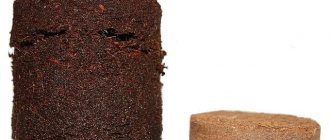Begonia soil for planting, transplanting
The success of breeding and maintaining a flower mainly depends on the quality of the soil. The plant is not picky about the composition of the soil mixture, but an incorrect composition will lead to illness and death. But many novice gardeners are wondering which soil is best for begonias.
Components
Depending on the species, the composition of the substrate will vary. But mainly peat, sand, turf, and humus are used. In production, perlite sand or agroperlite, vermiculite, dolomite or limestone flour are sometimes used. Purchased soil mixtures are enriched with useful substances and various preparations are added to help the plant fight fungi and bacteria.
Minerals
Loves saturated soil. The soil should contain many microelements: nitrogen, iron, potassium, phosphorus, calcium. All the necessary substances are found in complex fertilizers. During active flowering, feed once every two weeks.
Acidity
Does not like acidic soil, so the soil mixture should have a low or medium acidity level. With increased acidity, the leaves acquire a dark green tint.
What to do with old land
During the year that the begonia grows in a pot before being transplanted into a new container, the soil in it is depleted. When the plant is replanted, the soil is shaken off to check the condition of the roots.
This is interesting: Soil (soil) for violets: soil for Saintpaulias with your own hands
The old soil is collected and added to the new soil for looseness. This will allow air to penetrate more easily to the roots.
The spent substrate is poured into a compost pit or onto garden beds.
Begonia is a beautiful indoor and garden plant. There are thousands of hybrid varieties. It is not difficult to grow, propagate, and care for them. The only condition is the right soil. They buy it in stores or prepare it themselves. Main components: leaf and turf soil, peat, sand.
What soil is needed for begonias?
Each flower will need a different substrate. It all depends on the species; the soil for planting begonias will vary. But there are general requirements that must be observed when leaving. Soil requirements:
- breathable;
- drainable;
- nutritious;
- loose.
Room
A common type of flower. Often found on the windowsills of amateur gardeners. It is not difficult to keep begonia at home. The room temperature should be 18-20 degrees.
Attention! Loves moist air. The spraying procedure must be carried out regularly. It does not tolerate window sills with bright sunlight, so the pot should be placed in a shaded window.
Feels great in the apartment. Containment conditions are easy to create. For a begonia plant, the soil should consist of turf, peat soil, and leaf soil in a ratio of 1:1:2.
Tuberous
There are three types of tuberous begonia: double large-flowered, medium-flowered, small-flowered and simple. It prefers short daylight hours, so starting from mid-summer it needs to be covered with light-proof material from seven o'clock in the evening. This promotes the development of tubers.
You can buy soil in a store or prepare it yourself. To germinate tubers you will need:
- perlite;
- peat moss or sphagnum;
- leaf soil.
Sprouted tubers should be planted in a substrate consisting of coarse river sand, leaf soil and turf in a ratio of 2:2:1. The earthen ball should always be slightly damp; excess water can lead to illness and death.
Ampelnaya
Perennial tuberous variety. The ampelous begonia flower needs slightly acidic soil. When preparing, put peat, sand and leaf soil into the soil. Ratio 1:1:3. Tubers can be germinated in sand.
The ampelous variety of the flower blooms profusely and for a long time. The flowers bloom one after another. At home they will bloom all winter, but like most plants they need rest.
Bush
Branched variety. It has a fleshy root without branches. There are perennial and annual species. The bushes vary in size, some can reach a height of up to two meters. Such a bush can be grown in an apartment, provided it is miniature.
An unpretentious variety. It has no special requirements for soil. You can take a purchased substrate or mix peat, sifted sand and black soil in equal proportions.
Decorative sheet
It differs from other species by its variegated asymmetrical leaves. It blooms inconspicuously. Can reach up to two meters in height. Has many different colors. Most often found in residential areas.
Popular house plant. Loves well-drained soil, consisting of two types of sand: coarse and fine, as well as turf and peat. Mix the components in the ratio 1:1:2:2.
Everblooming
Capable of blooming at home all year round. Can withstand frosts down to -9 C. Usually used in flower beds as an annual. There are varieties with sparse flowering, but these species are distinguished by the beauty of their variegated foliage.
The composition of the substrate is no different from the soil for other types of plants. The main requirement is breathability and water permeability. A purchased special substrate will do.
Garden, for open ground
Prefers shaded areas. Blooms long and profusely. Loves moist forest soil. Several plants can be grown from one tuber of a garden variety. Can be grown in flowerpots or an open flowerbed.
The soil should always be kept moist, without excess moisture. The soil at the planting site must be breathable and have good drainage. Clay soils should be mixed with sand, peat soil, and leaf soil so that the soil is loose.
Benefits of homemade substrate
Earthen substrate prepared at home is in no way inferior to industrial options. Naturally, it is very difficult to procure components in a megalopolis. Perhaps this event will serve as a great excuse for a weekend walk.
Preparing soil for indoor plants on your own has a number of undeniable advantages:
- A great excuse to go on a hike or bike ride to the nearest park.
- A great opportunity to spend time outdoors.
- An opportunity to save the family budget.
- Additional physical activity.
In addition, communication in the fresh air surrounded by wildlife strengthens relationships and helps mutual understanding between loved ones.
Soil for begonia universal composition
The flower is not whimsical in terms of substrate. But what kind of soil does begonia like? The soil mixture should consist of: coarse-grained and fine-grained river sand, peat, turf and leaf soil. When preparing the soil with their own hands, flower growers add minerals for flowering plants.
Attention! If the substrate is too acidic, the root system will stop growing.
The soil for begonias should be slightly acidic or neutral in acidity. The soil mixture should consist of peat, turf and river sand. Contain beneficial substances in the composition. To do this, use store-bought fertilizers for decorative flowering varieties.
What it is?
Begonia is a bright plant of the Begoniaceae family .
There are many known annual and perennial species of grasses, subshrubs and shrubs. Begonia leaves are asymmetrical, whole or dissected into several lobules with jagged or wavy edges. The inflorescence is complex and includes male and female flowers. The colors of the flowers are varied: white, yellow, pink, red, orange. A contrasting edging is possible along the edge of the petals. The fruit is a triangular capsule with small seeds. The root system of begonias can be tuberous, rhizomatous and branched. Tuberous begonia grows not only at home, but also in the garden. The remaining species are grown exclusively indoors.
How to prepare soil for begonias with your own hands
At different stages of plant development, the correct soil composition for begonias is required, which depends on the components in it. Varieties of soil mixtures prepared by yourself:
- Rooting of cuttings occurs best in a mixture of peat and sand in equal quantities.
- Mature plants require nutritious soil with good drainage. The soil mixture should consist of turf, humus and sifted sand in a ratio of 1:1:1.
- For varieties that form flowers, it should consist of turf, humus and peat. In a ratio of 1:2:2.
Beginning gardeners are wondering what kind of soil is needed for begonias. For preparation you will need leaf soil; it is suitable for most plants due to its less nutritious properties. Has low acidity. Ideal for planting a tropical beauty.
The soil is prepared in the fall. They are collected in parks, mixed forests, birch groves, or can be taken from the garden, under fruit trees. To harvest the soil, it is necessary to collect fallen leaves of birch, maple, linden, elm, hazel, and fruit trees. The soil that was under the foliage is taken. Mix both ingredients and disinfect.
Attention! It is better not to take fallen leaves from oak, chestnut, willow, poplar and the soil under these trees. The leaves contain many tannins, which are harmful to begonias and most houseplants.
For home production, you will need turf land. Finding soil is not that difficult. A meadow with young grass is needed. Using a shovel, remove the top layer of soil and underneath it collect the necessary soil for a balanced composition.
Peat is harder to find and can be found in wetlands. Peat is a unique breed, widely used in agriculture and home gardening. It has many useful properties. To extract peat you will need a shovel. First you need to remove the top soil. Using a shovel, cut out the bottom layer or break it. The extracted soil is dried and disinfected.
Basic mistakes during preparation
Not all components may be suitable, even if they meet specifications. Sometimes gardeners use the right ingredients to prepare a soil mixture, but forget about some nuances:
- deciduous soil should not contain tannins, so you cannot take material from under any tree;
- any soil must be pre-cleaned to avoid the development of harmful microorganisms;
- If humus is used in the process of preparing the soil mixture, it must already be rotten or semi-decomposed.
The soil must be processed
Each preparation condition must be met, otherwise the substrate will harm the plant. If you make even one mistake, the planting material can be considered spoiled.
Ready soil for begonias
There is a large selection of ready-made soils on the agricultural and crop production market. The composition may vary depending on the manufacturer, but the main components used are the same. Let's consider and compare purchased soil for begonias, composition and prices.
Garden of Wonders
Loose, slightly acidic soil mixture. During production, perlite and sifted river sand were added to improve the properties of the planting substrate. Contains: peat, enriched with bio humus and essential macro and microelements. The composition contains complex mineral fertilizer for better plant development. The cost of 2.5 liters is 100 rubles.
There are also a number of well-known companies on the market that have proven themselves:
- World of soils. More nutritious substrate. In addition to peat and sand, the composition contains lime flour, vermiculite and chalk. For 2.5 liters of soil mixture, online stores ask for no more than 50 rubles.
- Begonia soil. Slightly acidic begonia soil, consisting of two types of peat, sifted river sand, and limestone flour. During production, complex mineral fertilizers were added to the mixture. The cost in the online store is approximately 100 rubles.
- Soil for begonias "FASCO". Breathable, well-drained. It consists of high and low peat, dolomite or limestone flour, expanded clay, and fine-grained river sand. Complex fertilizer has been added to the composition. Price: about 100 rubles.
What soil is needed for Rex begonia
The royal species was found at the end of the 19th century. Reaches one and a half meters in height. Over time, the stem begins to creep. Different types of plants have many different foliage colors. Does not tolerate temperatures above 27 degrees. The optimal temperature range is from 18 to 26 degrees. Prefers diffused sunlight. Watering is done as the soil dries.
It has many hybrids, bred from an Indian plant. For the royal begonia flower, the soil for planting should be slightly or neutrally acidic. The earth must have good water and oxygen permeability. Pure humus and peat are not suitable for planting. The soil mixture should contain deciduous soil, peat and coarse sand. The ratio of components is 2:1:1.
Watering and fertilizing
Begonia loves water. When watering, it is recommended to adhere to the following rules:
For irrigation, water at room temperature that has been standing for 24 hours is used.- A drainage system should be organized at the bottom of the flowerpot.
- Moistening is required when the soil has dried to a depth of 1.5 centimeters.
- From late November to March, it is necessary to reduce watering to once a week. Tuberous species enter dormancy and are kept in peat; watering is completely stopped.
- Since March, the intensity of moisture has gradually increased.
- In summer, it is necessary to moisten the soil so that excess water flows out through the drainage hole. After some time, drain the remaining moisture from the pan. The frequency of the procedure is 2 times a week.
- In extreme heat, daily watering is required.
- From October, it is necessary to water as the top layer of soil dries.
- It is important to avoid stagnation of moisture, which causes root rot.
Soil for begonia Elatior
Decorative perennial variety. The leaf blades are asymmetrical, blooms profusely and for a long time. Used for home propagation and decoration of garden beds. Elatior is able to purify indoor air from harmful microorganisms.
The maximum height of some elatior species is just over one and a half meters in height. The minimum plant size is up to 20 centimeters high. For abundant flowering, a lot of diffused sunlight is needed.
Attention! Elatior does not like hot rooms. The room where the plant stands should be draft-free with a constant temperature between 21 and 25 degrees.
The soil should not be waterlogged, otherwise the flower may get sick and die. It is better to choose a light, drainable, breathable substrate for the flower. You can add a little coconut fiber to the soil, and lime or dolomite flour to reduce acidity. Expanded clay or other drainage is added to the bottom of the pot.
Ready-made soil can be bought at a specialized store, but to prepare it yourself you will need:
- one part of coarse-grained river sand;
- two parts of peat;
- two parts of leafy soil.
How to sterilize soil correctly
The likelihood of introducing the disease to plants through the soil is low. It is only 20%. Most cases are infected or weak seeds. The likelihood of infection through a purchased substrate is even less. But amateur flower growers and gardeners use different methods of soil sterilization. But not all of them actually work and are not as useful as many people think.
There is an opinion among gardeners and flower growers that potassium permanganate can disinfect the soil from pathogenic bacteria. But that's not true. Professional agronomists claim that when potassium permanganate gets into the soil, it quickly disintegrates and the number of microorganisms dangerous to plants does not decrease.
Potassium permanganate can be used to soak seeds. A solution of potassium permanganate can help open the pores of seeds, which has a positive effect on germination. Brilliant also has zero effect if used as a disinfectant.
Steaming the soil is also of dubious benefit. This is due to the fact that during sterilization using a double boiler, not only pathogenic bacteria and fungi die, but also microbes beneficial to plants. But harmful microorganisms take root better in a disinfected substrate.
For example, Staphylococcus aureus will feel great in such soil, because all competitive microflora was previously killed by steaming. To protect against diseases, it is better to use special means that stimulate phytoimmunity. And also water the soil with antibacterial agents for plants to eliminate the possibility of bacterial diseases.
Attention! To get rid of parasites, larvae, and insect eggs, you need to calcine the soil using a microwave or oven for 15-20 minutes at a temperature of 200 degrees. This procedure will not destroy beneficial microflora, but will kill insects and other pests.
